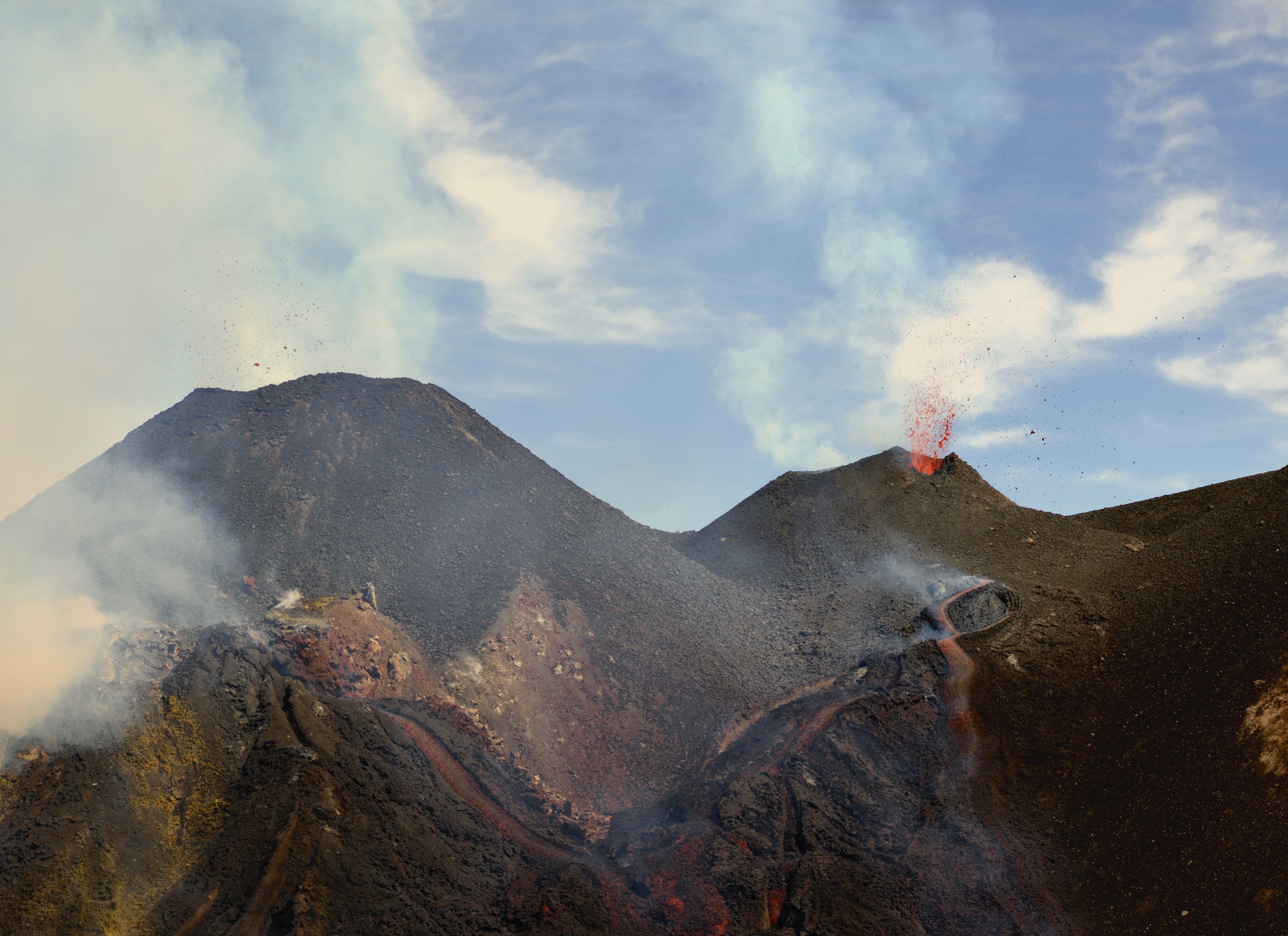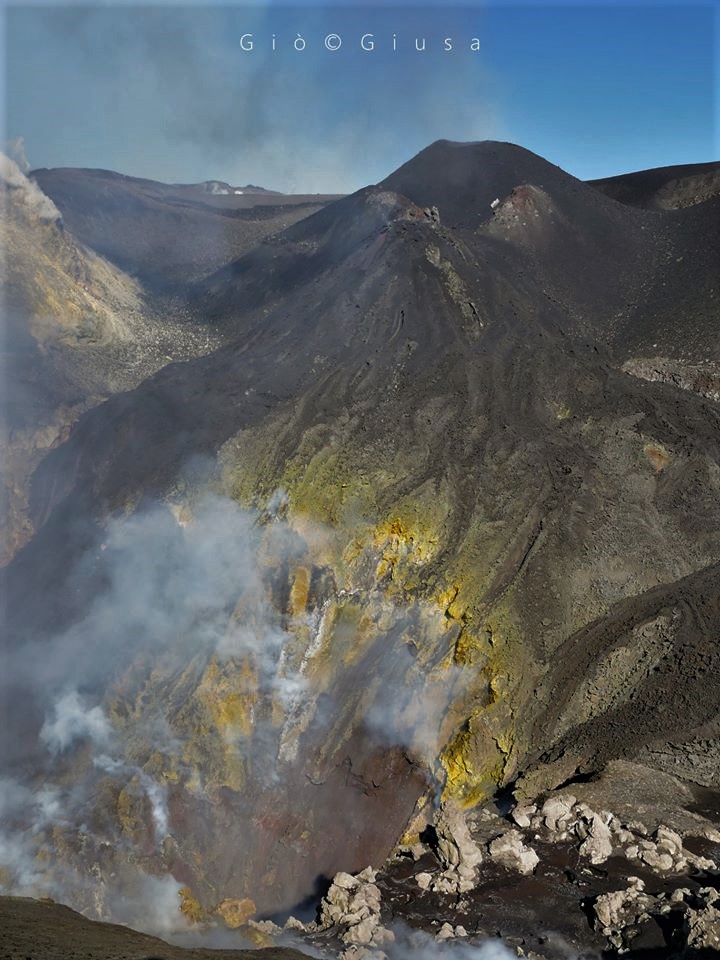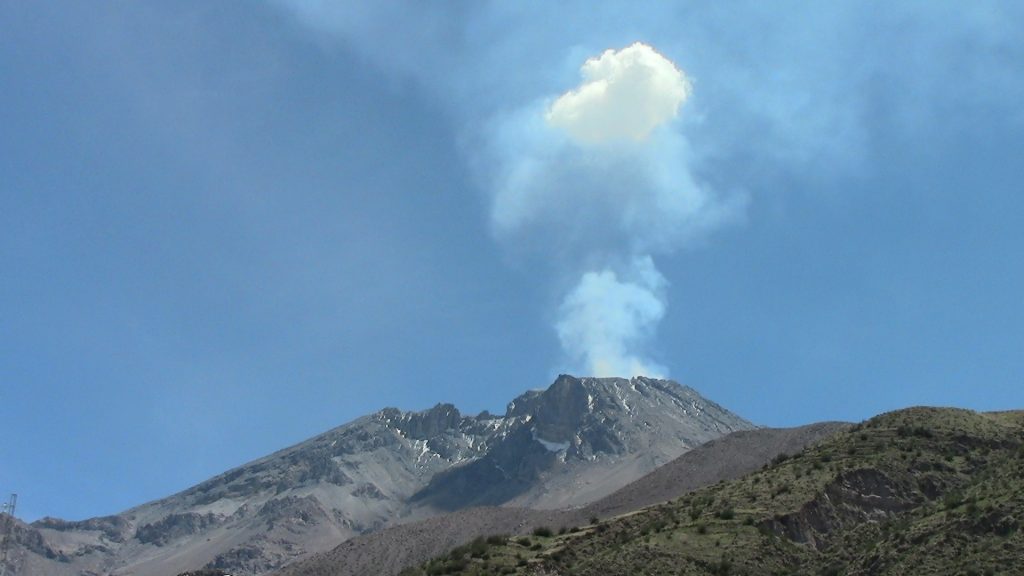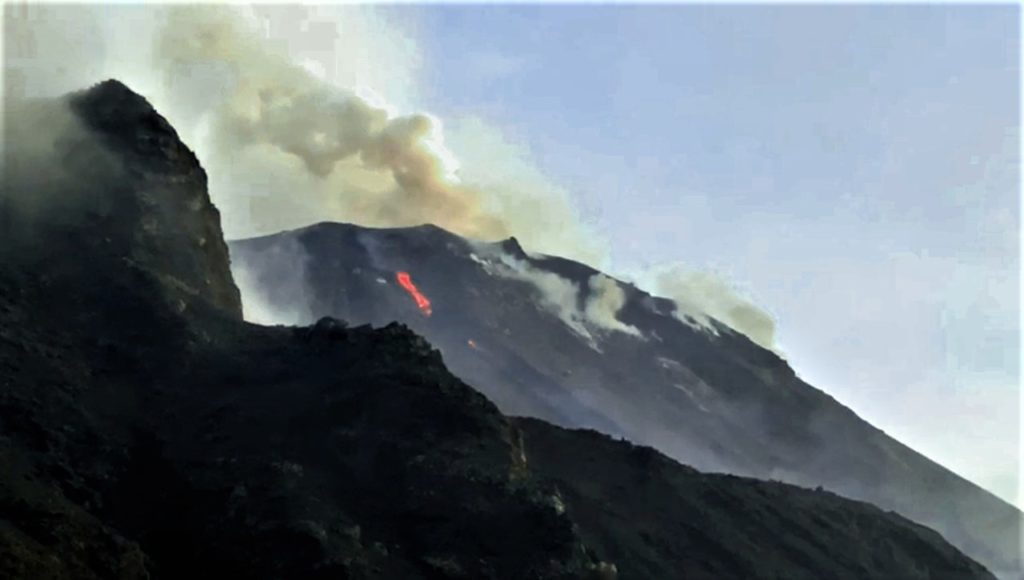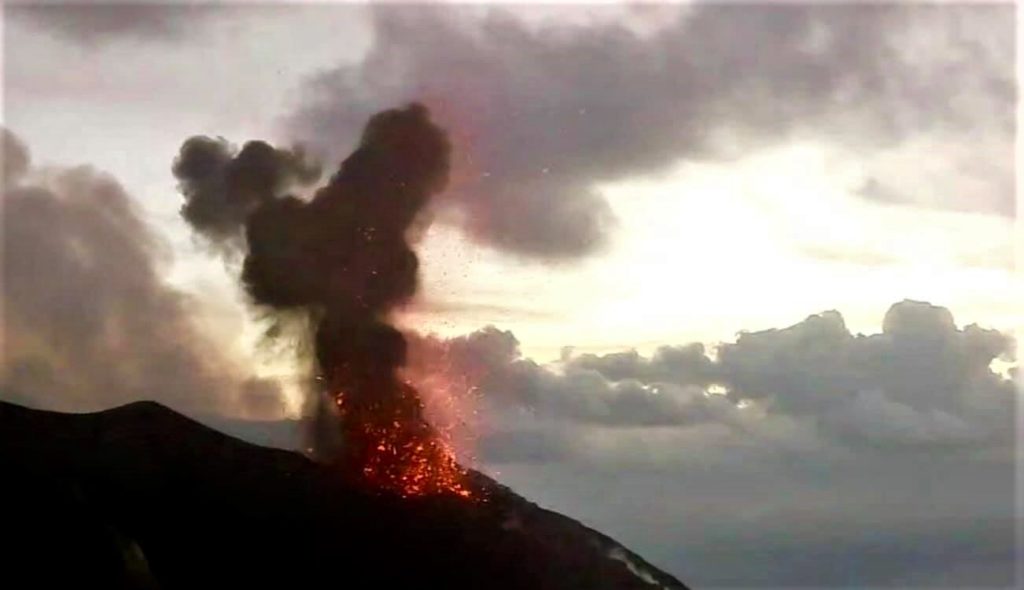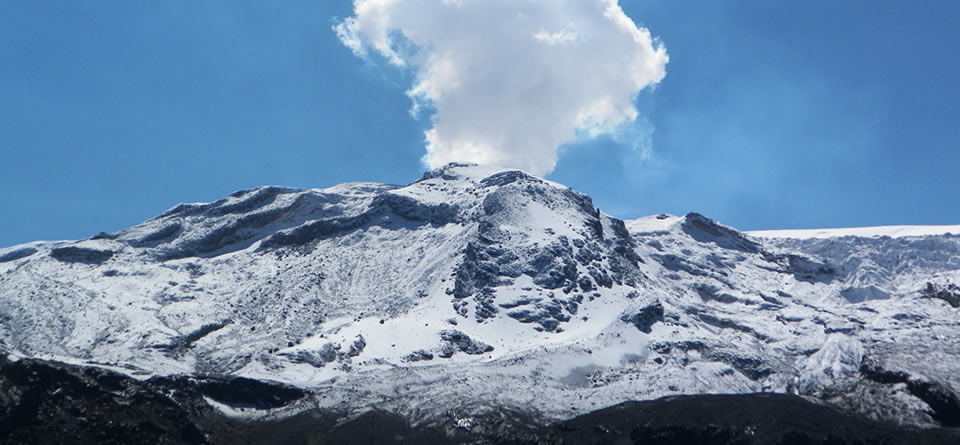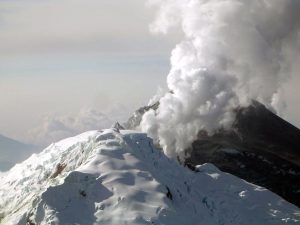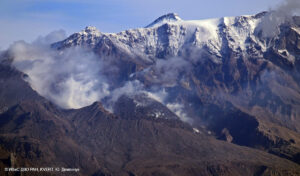April 08 , 2020.
Italy / Sicily , Etna :
Weekly bulletin from 30/03/2020 to 05/04/2020. (date of issue 07/04/2020).
SUMMARY OF ACTIVITY STATUS
In light of the monitoring data, it is highlighted:
1) VOLCANOLOGICAL OBSERVATIONS: Strombolian and effusive intra-crater activity of the Voragine crater. Degassing of the New Southeast Crater and the Northeast Crater.
2) SEISMOLOGY: Low seismic fracturing activity; Stable volcanic tremor at high values
3) INFRASOUND: Moderate infrasonic activity.
4) DEFORMATIONS: The Etna soil deformation monitoring networks did not show any significant variation to report last week
5) GEOCHEMISTRY: the flow of SO2 is at a medium-low level. Soil CO2 flow values are low to medium. The partial pressure of dissolved CO2 does not show significant variations. The isotopic ratio of helium is fixed at medium-high values (last update of 2/14/2020). No update is available for the C / S report
6) SATELLITE OBSERVATIONS: The thermal activity in the upper zone is of medium-low level.
VOLCANOLOGICAL OBSERVATIONS.
During the week, monitoring of Etna activity was carried out using surveillance cameras from the INGV – Catania section. Due to unfavorable weather conditions throughout the week, there are no full camera observations, especially for Thursday, April 2, where observations were not possible.
In the time windows of visibility of the cameras, it was possible to observe that the intra-crater eruptive activity continues in the crater of Voragine (VOR) as reported in the previous bulletin (Bulletin Rep. N ° 14/2020 March 31, 2020). Explosive activity of the Strombolian type produced rare and light ash emissions.
The new South-East crater (NSEC) fed an intense degassing with pulses of the mouth placed between the NSEC and the South-East crater (SEC), while the North-East crater was characterized by a ordinary degassing.
Volcanic tremor: During the week, the average amplitude values of volcanic tremor are in the high level without showing large variations. The sources of the tremor were located under the summit craters, in an altitude range between 2,500 and 2,700 m above mean sea level.
Source : INGV.
Lire l’article en entier : file:///C:/Users/Utilisateur/AppData/Local/Packages/Microsoft.MicrosoftEdge_8wekyb3d8bbwe/TempState/Downloads/BollettinoEtna20200407%20(1).pdf
Photos : Gio Giusa
Peru , Ubinas :
Analysis period: March 30 to April 5, 2020. Arequipa, April 6, 2020.
Alert level: ORANGE
The Geophysical Institute of Peru (IGP) reports that the eruptive activity of the Ubinas volcano remains at low levels. To date, the recording of earthquakes associated with the ascent of the magma towards the surface is rare. There are light and sporadic emissions of whitish magmatic gases and water vapor. According to this scenario, the possibility of volcanic explosions and / or ash emissions is low.
Between March 30 and April 5, the IGP recorded and analyzed a total of 42 seismic events associated with the dynamic behavior of the Ubinas volcano, with the predominance of seismic signals of the Volcano-Tectonic (VT) type, related to the fracturing of rocks inside the volcano. On average, 6 earthquakes were recorded per day with magnitudes below M1.1. The seismic activity linked to the rise of magma (hybrid type) has decreased in terms of the number of events; 1 earthquake was recorded over the entire period
Surveillance cameras recorded light and sporadic emissions of volcanic gases and water vapor, with heights less than 100 m above the summit of the volcano. Monitoring the deformation of the volcanic structure does not record any significant anomalies. MIROVA satellite monitoring did not record any thermal anomalies.
Source : IGP.
Photo : Unknown author.
Italy , Stromboli :
Weekly bulletin from 30/03/2020 to 05/04/2020. (date of issue 07/04/2020).
SUMMARY OF ACTIVITY STATUS
In light of the monitoring data, it is highlighted:
1) VOLCANOLOGICAL OBSERVATIONS: During this period, a normal strombolian type explosive activity was observed, accompanied by degassing and an overflow of lava. The hourly frequency of explosions fluctuated between medium-high values (20 events / h on March 30) and medium-low values (07 events / h on April 05). The intensity of the explosions was mainly medium-low in the area of the North crater and medium-high in the area of the Center-South crater.
2) SEISMOLOGY: The seismological parameters do not show significant variations.
4) DEFORMATIONS: The Stromboli soil deformation monitoring networks did not show any significant changes for the period considered.
5) GEOCHEMISTRY: the flow of SO2 is at a medium-high level. The last measurement of the CO2 / SO2 ratio is at an average value (last update on 02/09/2020). The isotopic ratio of helium remains on average values (last update of 09/03/2020). There is no update on the CO2 released by the soil.
6) SATELLITE OBSERVATIONS: Increase in thermal activity in the summit area which reaches a medium-high level.
VOLCANOLOGICAL OBSERVATIONS
The analysis of the images recorded by the cameras placed at an altitude of 400m, at an altitude of 190m and at Punta dei Corvi made it possible to characterize the eruptive activity of Stromboli. During the reporting period, the explosive activity was mainly produced by at least 3 (three) eruptive vents located in the area of the North crater and by at least 3 (three) eruptive vents located in the area of the Center-South crater . All the mouths are placed inside the depression which occupies the crater terrace.
Due to the unfavorable weather conditions during the day of March 31, the visibility of the crater terrace was insufficient for a correct description of the eruptive activity.
Lava overflow on March 30, 2020:
March 30 from 23:31 UTC started from the north mouth located on the edge of the area of the North crater, overlooking the Sciara del fuoco, an overflow of lava which produced a flow which spread on the Sciara until it reaches the coast line at 01:17 UTC on March 31. The duration of the event is not exactly definable due to poor visibility conditions but it is estimated to have ended around 02:30 UTC on April 01, 2020.
In the North zone, the explosions were mainly of variable intensity, from low (less than 80 m in height) to high (more than 150 m in height) emitting coarse materials (lapilli and bombs). In numerous explosions, the abundant fallout covered the outer slopes of the area overlooking the Sciara del fuoco and the blocks rolled until they reached the coast. The average frequency of explosions in the North zone varied between 7 and 13 events / h. The explosive activity of the Center-South zone produced explosions of mainly fine materials (ashes) mixed with coarse materials of medium intensity (less than 150 m in height) sometimes high (the products exceeded 250 m in height). The frequency of explosions in the Center-South zone varied between less than 1 and 10 events / h.
Source : INGV.
Read the whole article : file:///C:/Users/Utilisateur/AppData/Local/Packages/Microsoft.MicrosoftEdge_8wekyb3d8bbwe/TempState/Downloads/BollettinoStromboli20200407%20(1).pdf
Photos : Renzo-Zaia , webcam.
El Salvador , San Miguel ( Chaparrastique )
The seismicity of the San Miguel volcano does not change.
Since the dawn of Sunday, April 5, 2020, it has been observed that the seismicity of the volcano has changed its pattern, presenting small fluctuations which do not exceed normal behavior. The amplitude of the seismic signals measured in RSAM is kept within the acceptable threshold of 150 units (see Figure 1), varying between 50 and 150 units. The peaks above the threshold are due to subduction earthquakes.
Figure 2. Behavior of the volcano’s seismic vibration in RSAM units, during the last five days. Note the change in the seismic pattern, without exceeding the established threshold of 150 units.
Source: MARN
Until the time of publication of this report, the volcano is calm, presenting no gas pulses or ashes; There is also no report of underground noise (see Figure 2).
Figure 2. The volcano is observed calmly, without emission of gas.
Source: MARN
Our analysis indicates that the volcano is in a stable activity phase with slight fluctuations in seismicity, without exceeding the established normal.
The Ministry of the Environment and Natural Resources (MARN) provides 24/7 surveillance of the volcano and close communication with the Directorate General of Civil Protection and local observers.
This report concludes the warning phase. In the event of a significant change in the activity of the volcano, a special prior report will be issued.
Source : Marn.
Colombia , Nevado del Ruiz :
Weekly activity bulletin of the Nevado del Ruiz volcano
The level of activity continues at the level of yellow activity or (III): changes in the behavior of volcanic activity.
With regard to monitoring the activity of the Nevado del Ruiz volcano, the COLOMBIAN GEOLOGICAL SERVICE reports that:
The seismicity linked to the dynamics of the fluids, inside the volcanic conduits, presented similar levels in terms of number of events and seismic energy released compared to those recorded the previous week. This seismic activity was characterized by the occurrence of continuous volcanic tremors, tremor pulses, earthquakes of the long period type and of the very long period type. These earthquakes exhibited varying energy levels and spectral content. Some of these signs were associated with small emissions of gas and ash, which were confirmed by cameras installed in the volcano area, by reports from officials of the Los Nevados National Natural Park in the region and by notifications from VAAC (Current Volcanic Ash Advisories).
The seismicity generated by the fracturing of the rocks increased in number of earthquakes and decreased in released seismic energy, compared to the previous week. This type of seismicity was mainly located in the South-East, South-South-West and North-East sectors of the volcano, as well as in the Arenas crater, at depths varying between 0.7 and 5.5 km. The maximum magnitude recorded during the week was 0.6 ML (local magnitude) corresponding to the earthquake recorded on April 05 at 6:59 p.m. (local time), located 9.3 km northwest of the Arenas crater, at 5.1 km deep.
The occurrence of several seismic episodes of the « drumbeat » type, earthquakes associated with the fracturing of rocks on March 31 and April 04 is highlighted. These episodes were characterized by a low level of energy. This type of seismicity is linked to the process of ascension and evolution of domes on the surface of a volcano.
The deformation of the volcanic surface, measured from GNSS stations (Global Navigation Satellite System), did not show any significant change or deformation process during the week.
By monitoring the information provided on the Mirova and NASA FIRMS web portals, low energy thermal anomalies have been noted in the volcano in the past week.
Source : SGC.
Photo : Milton H Arias.

